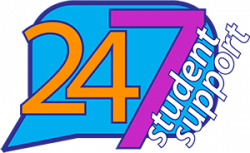Engagement is a choice. This is the main takeaway from “Engagement Magic: Five Keys for Engaging People, Leaders, and Organizations,” the book I’ve mentioned in a previous post, where I described the five key drivers of engagement: Meaning, Autonomy, Growth, Impact and Connection. “Engagement Magic” is the latest book on my reading list, which is helping me facilitate the Campus Engagement workgroup through May 2020 at Virginia Western. This passage really sums up the central message from author Tracy Maylett, who has advised companies on employee engagement for over 20 years: Most organizations don’t understand engagement, so they can’t create it. One of the biggest misapprehensions is that engagement is something the organization imposes on employees — that it’s transactional. If I give you this, that, and the other, you’ll become engaged in your work. It’s as if engagement were something done to employees, something inflicted upon them. And this is another reason most engagement efforts fail — they assume the responsibility for engagement rests solely on the shoulders of the organization. But in reality, engagement is a 50-50 proposition — a two-way street. Yes, the organization is responsible for creating an environment where engagement can flourish — tilling and… Continue Reading How to get the engagement conversation started: Are you in?Read More
A couple of weeks ago, I spoke at a conference hosted by the North Carolina Council of Resource Development (NC CORD). My presentation was titled “How to Make Grant Magic,” and I livened up my slides with photos of the Mill Mountain Star, plenty of Harry Potter references, and a GIF of the bewitching Debbie Reynolds in “Halloweentown.” But most importantly, I framed this hour-long talk around inspiring books (my magical ingredients)… as well as the key drivers of engagement. This was a serendipitous accident. In the weeks leading up to the conference, I volunteered to serve as facilitator of Virginia Western’s Campus Engagement Workgroup. As part of my research for that role, I stumbled onto a blog post by DecisionWise, a longtime consulting company based in Utah, which recently published the book “Engagement Magic: Five Keys for Engaging People, Leaders, and Organizations.” Their acronym was absolutely perfect for my presentation theme: M Meaning: Does your job provide you with a sense of meaning and purpose? A Autonomy: Do you have the freedom to choose how to best perform your job? G Growth: Are you feeling challenged and stretched in your work? I Impact: Does your work have any impact on… Continue Reading How to make grant magicRead More
I’m still on my joy ride, and I just finished another book: Chief Joy Officer: How Great Leaders Elevate Human Energy and Eliminate Fear. ICYMI … over the summer, I read a Harvard Business Review article that argued that all organizations should prioritize joy. This HBR article clicked with me like no other in quite some time, and it inspired me to read an armload of books on the topic, all of which revolve around the importance of joy, especially in our jobs. Catch up on my reading list here. “Chief Joy Officer” is book No. 4 since July, and the second book I’ve read by author Richard Sheridan (“Joy, Inc.” was the first). In both books, Sheridan talks about Menlo Innovations, the small software company he co-founded in Ann Arbor, Michigan. His ideas about intentionally restoring joy for customers and coworkers have resulted in ongoing public tours and workshops; some of the biggest companies in the world have visited Ann Arbor to learn more about “the Menlo way.” There’s a lot of good stuff to unpack in both books, but I’ll only share one tidbit today. Sheridan says the most important thing a leader can do for her organization… Continue Reading Joyful, creative learners have this habit in commonRead More
About Shelley
 Shelley Lyons is glad to be back on campus as she is a Virginia Western alum, and has served as the Administrative Officer for Grants Administration at Virginia Western since early 2022. Prior to VWCC, her career focus was within the Human Services and Arts fields. She wrote her first grant in 1996 on a whim and has continued to plan and learn since that time. She most enjoys seeing a well-planned project come to fruition, where funder, project manager and beneficiaries can all feel success and see impact.
Shelley Lyons is glad to be back on campus as she is a Virginia Western alum, and has served as the Administrative Officer for Grants Administration at Virginia Western since early 2022. Prior to VWCC, her career focus was within the Human Services and Arts fields. She wrote her first grant in 1996 on a whim and has continued to plan and learn since that time. She most enjoys seeing a well-planned project come to fruition, where funder, project manager and beneficiaries can all feel success and see impact.
Recent Posts
- Have you heard? October 28, 2024
- The Game of Life – Innovation Edition! August 29, 2024
- Why Try An LOI? May 10, 2024
- Grant Nerds Unite! March 12, 2024
- The Power of Collaboration November 17, 2023

